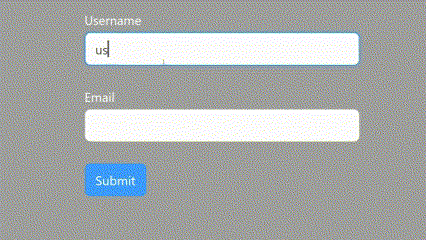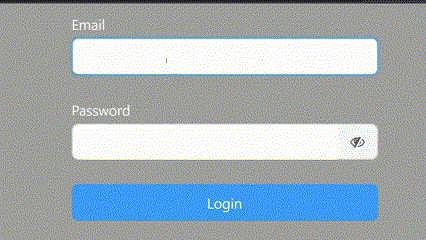React Suite 组件表单验证输入
React Suite 是一个为 ReactJS 提供了美观且可定制的组件集合,使得构建用户界面更加简单。其中一个重要的组件是 Input,它处理表单验证和用户输入,能够显示有用的错误消息。这使得它非常适合创建强大且用户友好的 Web 应用。
表单验证输入
React Suite 中的 Input 组件是一个灵活的表单输入组件,可以用作普通的文本输入或者多行文本输入。你可以使用占位符、大小和验证等属性轻松自定义它。还可以触发动作并显示工具提示。这是一种在 React 应用中处理用户输入的用户友好方式。
语法
import { Input } from 'rsuite';
const InputForm = () => (
<>
<Input placeholder="Input" />
</>
);
创建应用程序并安装所需的模块的步骤
步骤1: 使用以下命令创建React应用程序:
npx create-react-app foldername
步骤2: 在创建项目文件夹,即文件夹名称 , 后,使用以下命令进入该文件夹:
cd foldername
步骤3: 创建ReactJS应用程序后,使用以下命令安装所需模块:
npm install rsuite
步骤4: 导入所需样式 在 App.js 文件中 在 src 文件夹中。
import "rsuite/dist/rsuite.min.css";
步骤5: 定义所需的验证架构和状态
步骤6: 编写您的应用程序所需的代码
步骤7: 运行应用程序
npm start
注意: 您的应用程序现在正在运行在 http://localhost:3000/
示例1: 简单的提交表单默认输入验证
import { Form, Button, Schema } from "rsuite";
import "rsuite/dist/rsuite.min.css";
function App() {
const nameRule =
Schema.Types.StringType().isRequired(
"This field is required."
);
const emailRule = Schema.Types.StringType().isEmail(
"Please enter a valid email address."
);
return (
<Form>
<Form.Group controlId="name">
<Form.ControlLabel>
Username
</Form.ControlLabel>
<Form.Control name="name" rule={nameRule} />
</Form.Group>
<Form.Group controlId="email">
<Form.ControlLabel>Email</Form.ControlLabel>
<Form.Control
name="email"
rule={emailRule}
/>
</Form.Group>
<Button appearance="primary" type="submit">
Submit
</Button>
</Form>
);
}
export default App;
输出: 以上示例展示了一个简单的提交表单,其中包括两个输入字段:用户名和电子邮件。在这个示例中,我们使用了React Suite的组件:Form、Button和Form.Control,并使用自定义验证规则(nameRule和emailRule),使用Schema.Types.StringType()。

示例2: 自定义验证的简单登录表单输入
import React, { useState } from "react";
import {
Form,
Button,
ButtonToolbar,
Schema,
InputGroup,
} from "rsuite";
import EyeIcon from "@rsuite/icons/legacy/Eye";
import EyeSlashIcon from "@rsuite/icons/legacy/EyeSlash";
import "rsuite/dist/rsuite.min.css";
import "./App.css";
function App() {
const { StringType } = Schema.Types;
const model = Schema.Model({
password: StringType().isRequired(
"This field is required."
),
email: StringType()
.isEmail("Please enter a valid email address.")
.isRequired("This field is required."),
});
const [visible, setVisible] = useState(false);
const handleChange = () => {
setVisible(!visible);
};
return (
<>
<Form model={model}>
<Form.Group controlId="email">
<Form.ControlLabel>
Email
</Form.ControlLabel>
<Form.Control
name="email"
type="email"
/>
</Form.Group>
<Form.Group controlId="password">
<Form.ControlLabel>
Password
</Form.ControlLabel>
<InputGroup>
<Form.Control
name="password"
type={
visible === false
? "password"
: "text"
}
/>
<InputGroup.Addon
onClick={handleChange}
>
{visible ? (
<EyeIcon />
) : (
<EyeSlashIcon />
)}
</InputGroup.Addon>
</InputGroup>
</Form.Group>
<ButtonToolbar>
<Button
appearance="primary"
type="submit"
>
Login
</Button>
</ButtonToolbar>
</Form>
</>
);
}
export default App;
输出: 这个示例演示了一个带有电子邮件和密码输入字段的登录表单。密码输入字段还包括一个切换按钮,用于显示/隐藏密码,使用可见状态。自定义验证规则是使用Schema.Types.StringType()定义的。输出

参考: https://rsuitejs.com/components/form-validation/#form-validation
 极客教程
极客教程